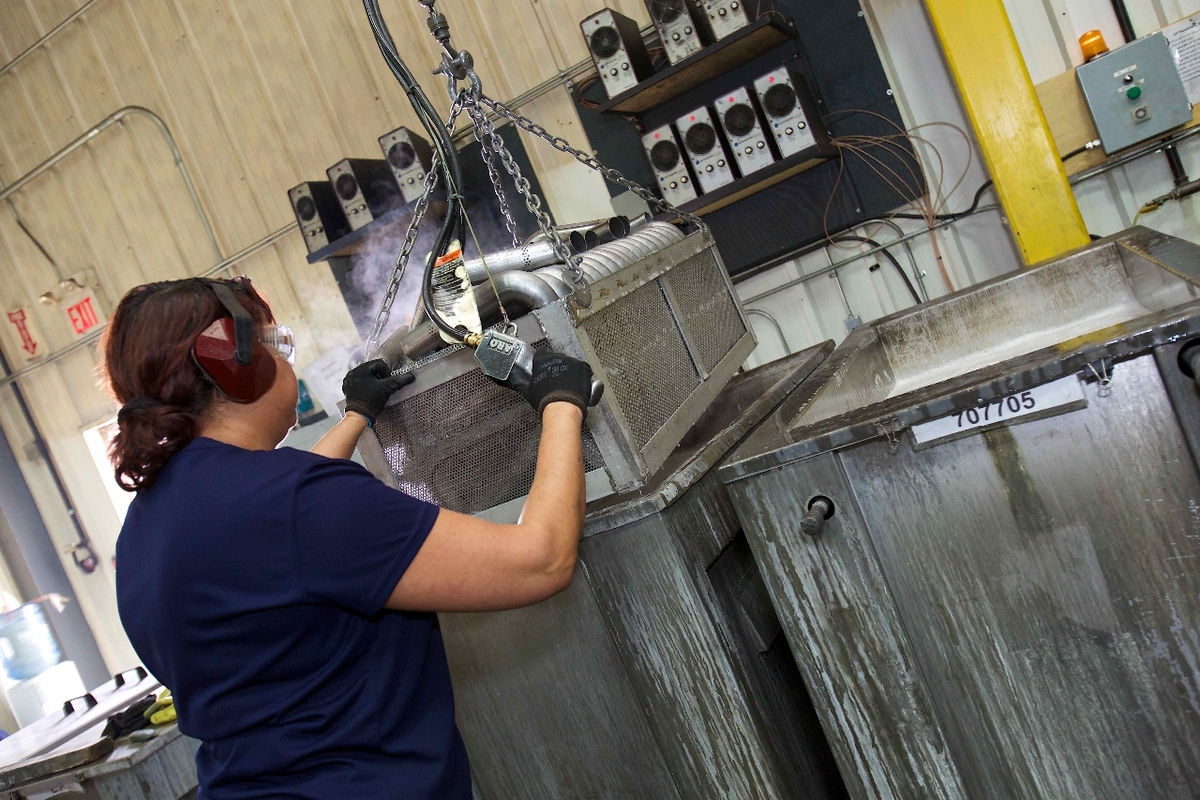Metal parts aren’t always ready for use right off the line. Many pieces, whether produced by stamping or machining, require further processing before they can be safely shipped or assembled. Deburring, or burr removal, is a necessary step in the metal finishing process.
There are a number of ways to remove sharp edges and burrs quickly and affordably from metal parts, including vibratory finishing and barrel tumbling. Here, you’ll get an overview of 5 common deburring methods to help you determine the best deburring process for your metal parts.
Read on to learn about removing sharp edges and burrs through vibratory finishing, barrel tumbling, manual deburring, thermal energy deburring, and electromechanical deburring.
What is Metal Deburring?
Manufacturers like you employ a variety of operations to turn metal blanks into useable parts: like stamping, milling, grinding, shearing, and engraving.
As you know, these methods often leave the seams and edges of metal parts with rough edges or protrusions of material.
Rough edges are imperfections known as burrs, and the process of removing them is called deburring.
In addition to being unsightly, metal burrs have a negative impact on the safety, functionality, and overall quality of the parts:
- Small notches can cause moving parts to catch, increasing the chance for accidents or unnecessary production delays
- Sharp edges pose a safety hazard to both workers and end consumers who handle the parts.
- The presence of burrs interferes with the application of other finishing processes, such as powder coating and electroplating.
Left alone, metal burrs can create potentially costly issues for manufacturers. Metal deburring is essential to ensure the quality and functionality of metal parts.

Ways to Remove Sharp Edges and Burrs
Although many processes can be used for deburring, not all of them are equally efficient or applicable to any given case. The 5 most common ways of removing burrs and edges are vibratory finishing, barrel tumbling, manual deburring, thermal energy deburring, and electromechanical deburring.
- Manual deburring: A skilled craftsperson can remove burrs by hand using specialized manual deburring tools. Manual deburring is flexible and cost-effective, but it requires a significant investment of time, making it unsuitable for finishing a large quantity of parts.
- Thermal energy method: Also known as the thermal deburring, this method uses a combustive reaction to burn away burrs in a sealed chamber. Thermal deburring can quickly target burrs on multiple surfaces and many pieces at once.
- Electromechanical deburring: Metal burrs can be dissolved using an electrical current combined with a salt or glycol solution. Electromechanical deburring is useful for small, precision pieces that require deburring in hard-to-reach places.
- Vibratory finishing: For softer metals parts, vibratory finishing is a less aggressive but highly efficient deburring method. Vibratory finishing involves placing the part in a rotating barrel or vibrating bowl along with a mix of liquid and abrasive components, such as ceramic, plastic, or steel finishing media. As the machine rotates, the media continuously rubs against the part in a corkscrew motion to remove sharp edges and other metal imperfections.
- Barrel tumbling: The parts are placed in a tumbling barrel, which rotates at high speed to brush the pieces together and achieve the desired finish. In addition to deburring, barrel tumbling can be used to de-flash, de-scale, clean, or remove rust from metal parts.
Choosing a Deburring Method
Each metal deburring method has benefits and drawbacks for different applications. Your best method of choice will depend on the type of metal, the size and shape of the component, and the finish you desire.
That being said, certain deburring methods come with clear disadvantages for manufacturers who are dealing with hundreds or thousands of parts at a time.
- Manual and electromechanical deburring, while effective on a small scale, are simply not feasible options in a large-scale manufacturing operation.
- Thermal deburring focuses on removing thin burrs of even thickness that are already loose. It also leaves behind a ‘raised edge’ that must be finished in a secondary process.
This leaves two methods: barrel tumbling and vibratory finishing.
When you need to turn over thousands of parts on a tight deadline, the choice is clear.
Depending on the application, vibratory finishing cycle times can vary from just fifteen minutes to several hours. A complete barrel tumbling cycle can take between just six and 24 hours, and the consistency of this technique means you won’t have to watch the clock.
By choosing the proper method and the correct deburring media, these methods can deburr massive quantities of parts in a relatively short period. Proper preparation and media selection ensure that parts emerge from the finishing process unscathed, save for the removal of burrs.
The weight and geometry of the part, as well as its present condition and the desired finish, are also factors in the quality of finish. As experts in both vibratory finishing and barrel tumbling techniques, our team will advise you on which metal finishing method will best meet your demands.
Get a Quote For Mass Metal Deburring
Stop losing money to rejected parts. We’ve spent the past 43 years perfecting proprietary methods to deburr, radius, clean, de-flash and remove rust from hundreds to thousands of parts all at once. If you’re a manufacturer and you need a perfect finish, count on Latem Industries to deliver!
Reach out to us online to get your custom deburring quote now. We respond to all quote requests within 24 hours at the very latest.

